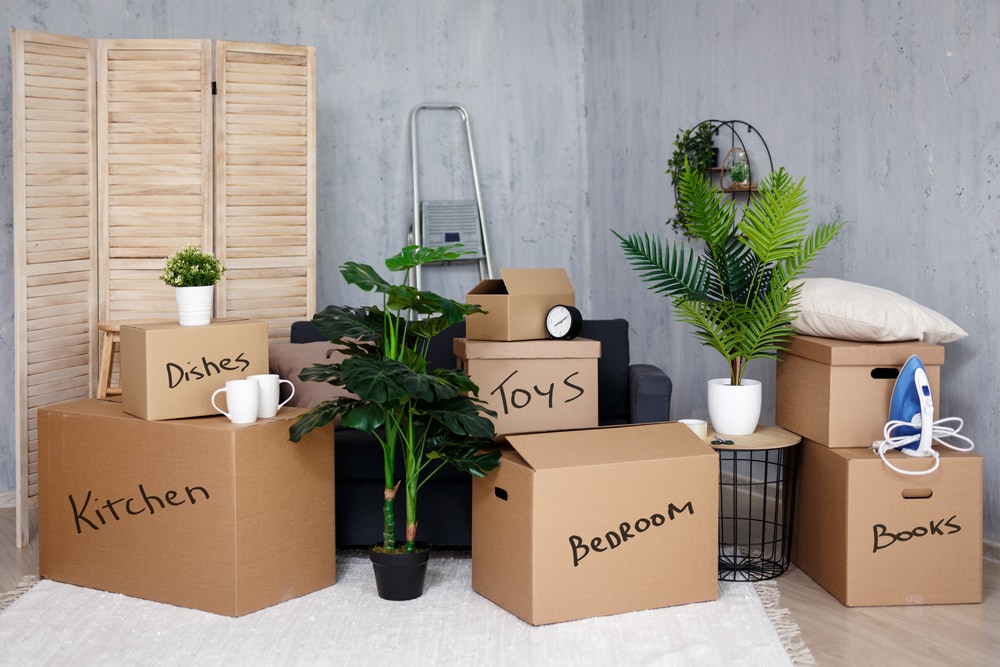The moving box: it’s an essential part of the packing process. But how many moving boxes do you need? And, more importantly, how heavy can you pack each of them before you make your move harder than it needs to be?
Those are the questions we’re exploring in this blog. Let’s dive in.
The Moving Box Dilemma
If you’ve ever moved before, you know the process goes something like this: you buy what you think is enough boxes, but the containers run out before your belongings do. In an attempt to stretch your supply, you start packing each box as full as possible.
Unfortunately, there are a few problems with that approach. First of all, overpacking boxes put your belongings at risk and makes it more likely that things will get broken, crushed, or crumpled. Secondly, heavy boxes are hard to move, and Hulking them around can cause serious injury. Think it won’t happen to you? Think again. A massive 75% of all back injuries occur during lifting tasks, many of which occur during moving.
Play it smart: protect yourself and your items by purchasing the right number of moving boxes and knowing how to pack them.
How Heavy Can You Pack a Moving Box?
There are many different sizes of moving boxes. The weight limit for each depends on the box’s dimensions. Here’s a general guideline to follow:
- 1.5 cubic foot boxes. Also known as “book boxes,” these moving containers can carry up to 60 pounds, although it’s best to keep them at 50 or lighter. Store smaller and denser items – like books, kitchen items, dishes, and small personal belongings – in these boxes.
- 3.0 cubic foot moving boxes. These larger boxes are excellent for large, light items. They can carry up to 65 pounds and are perfect for clothing, pots and pans, and small electronics.
- 4.5 cubic foot moving boxes. Ideal for linens and home items, these boxes can carry up to 65 pounds.
- 6.0 cubic foot boxes. These are good for up to 65 pounds. Prevent the bottom from blowing out by lining it with something structurally supportive (it should be flat and sturdy) that matches the footprint of the box. Use these containers for pillows, blankets, artwork, or couch cushions.
- 6.1 cubic foot boxes. These are large, rectangular boxes that work best for items that are too large to fit into the 6.0 cubic foot box. They can also carry about 65 pounds.
- Dish packs. Dish packs have a double thickness and are rated for a maximum weight of up to 120 lbs. They’re ideal for plates and bowls, as well as larger and denser items like kitchen appliances.
Packing Smart, Pack Safe
Moving is a big job. Don’t make it harder on yourself by overfilling your boxes. Staying within the weight guidelines above is an excellent way to simplify. Here’s another pro tip for you: make the most of your moving boxes by buying them from a moving company instead of a big box store. The box store brands tend to be flimsy and can’t hold as much weight as moving company boxes.
Here’s one important thing to keep in mind as you pack your boxes: eventually, you’ll have to move them! Not only will you need to move boxes out of the way to make more room to pack, but you’ll also have to get them out of the house and to your new home.
If you want to streamline your move even further, pack your boxes and hire a moving team to transport them for you. We can move them out of your home, onto a truck, into a storage facility, or wherever you need them to go. Let us do the heavy lifting for you so you can focus on everything else!
Are you looking for a team of professional movers to help you handle your relocation? Master Movers is here for you. Contact us today to request an estimate and get your move on the road.


